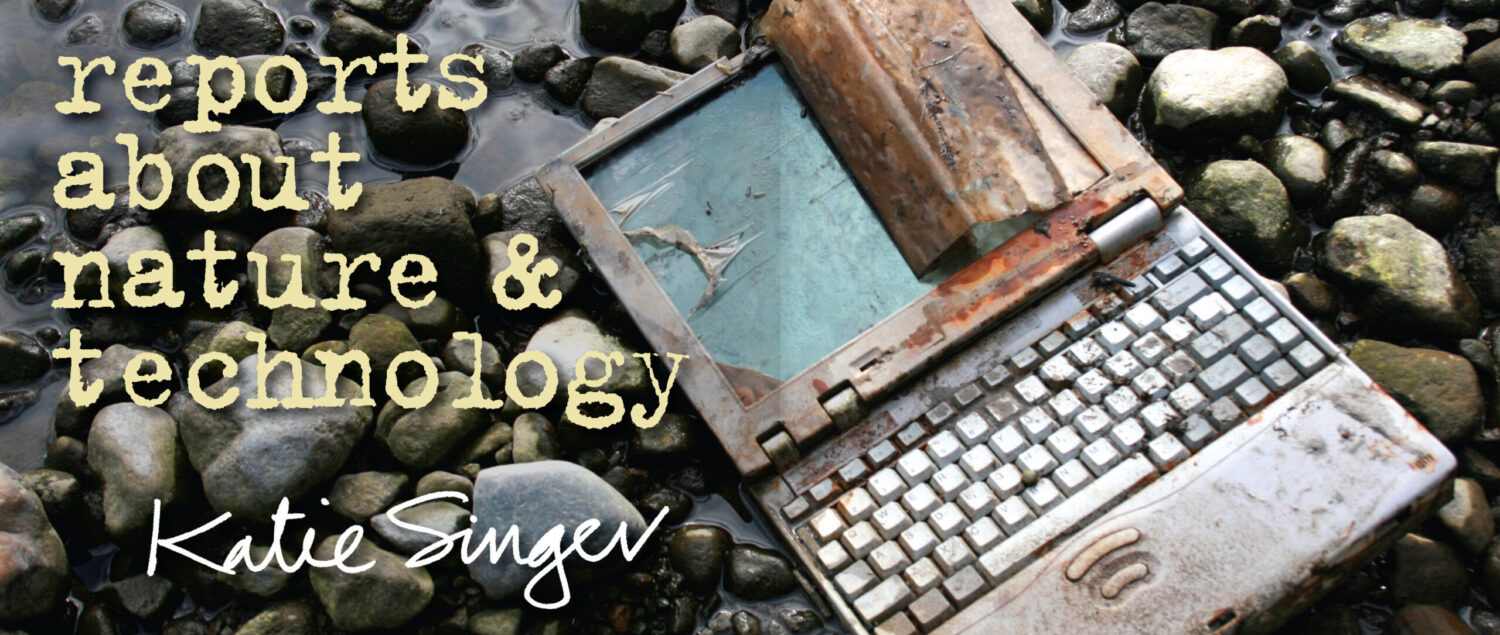Locating ourselves in a bioregion—locating our watershed
To move toward living within our ecological means
While I read daily about democracy collapsing and new mining operations, I wonder if reducing dependence on international supply chains is even possible Could any community limit its new infrastructure and tools (substations, telecom access networks, data centers, computers and vehicles) to those made only from materials found within a 500-mile radius? Would any community commit to sustaining itself by keeping what they have in good repair?
For more than a century, we’ve depended on infrastructure and tools made from ores, chemicals and water sourced and processed from multiple continents. Living beyond our ecological means is all most of us have ever known.
Community is no longer local, either, since Internet access provides international connections 24/7.
To live within our ecological means, we need, first, to know our own bio-region. A bio-region is defined by its water, landforms, mineral deposits, altitude, weather patterns, animal communities, plant communities, birds and insects. Geography—not political boundaries—defines a bioregion.
Locating yourself
Peter Berg (1937-2011) began developing bio-regionalism in the early 1970s. He realized that a sustainable society starts with locating ourselves in our bio-region. He encouraged people to “re-inhabit” and repair their natural environment by producing food locally and creating pollution-free energy systems.
In workshops, Berg would give people a big sheet of paper and tell them to mark north on it. Then, he would invite people to locate their watershed, draw its boundaries and the creek or river that defines it.
A watershed provides water for drinking, cooking and bathing.
After drawing your watershed’s boundaries, locate your home in relation to your watershed. Draw the landforms between your watershed and your home.
More questions about your region’s watershed
Internet searches can answer these—but why deny yourself the fun of research without an electronic interface?
- When does your rainy season begin? When does it end? How much total rain fell in your area last year? On average, over the last 25 years, how much rain fell each year?
- In your region, where does rainfall go? Include underground aquifers, and surface drainage from your region to the water’s final destination—i.e., the ocean.
- Trace your drinking water from precipitation to treatment to your tap to groundwater.
4. Where does your kitchen and bathroom wastewater go? How is it treated? - How much water does your household consume per month?
- How much water does your utility deliver per month to your community?
- Is your water utility publicly or privately owned?
- What percentage of your town’s water supply goes to household use? to manufacturing? to farming? to golf courses? to mining operations? to extinguishing fires?
- What pollutants affect your region’s water supply. How are the pollutants treated to make the water safe again?
- Does your water have PFAs? (Per-and polyfluoroalkyl substances, “forever” chemicals for which we currently have no way of removing from soil or bodies.)
- Does anyone in your region re-use grey water or blackwater?
- Name three ways you could conserve water.
Back to school
“Your head can be anywhere,” Peter Berg liked to say. “But your feet must be in a place.” As a new school year begins, imagine a world wherein every high school graduate can trace their water from precipitation to tap—and back to precipitation. Imagine a world of people aiming to live within our ecological limits, within our own bioregion’s provisions.
Resources
Berg, Peter, Discovering your life-place: a first bioregional workbook, 1990.
https://planetdrum.org posts international bioregional contacts.
Burgess, Rebecca, Fibershed: Growing a Movement of Farmers, Fashion Activists and Makers for a New Textile Economy, Chelsea Green, 2019. Making clothing’s fiber, dyes and chemistry from local materials.
Caduto, Michael and Joseph Bruchac, Keepers of the Earth: Native American Stories and Environmental Activities for Children, Fulcrum, 1988. Includes activities for learning about rain-making, saltwater, making waves and more.
Charles, Leonard, Jim Dodge et al., “Where You At? A Bioregional Quiz.” Coevolution Quarterly 32 (Winter 1981) https://dces.wisc.edu/wp-content/uploads/sites/128/2013/08/Where-You-At-Quiz.pdf
Dobson, Clive and Gregor Gilpin Beck, Watersheds: A Practical Handbook for Healthy Water, Firefly Books, 1999. Includes descriptions about watersheds and nutrient cycles, pollution sources and righting environmental wrongs.
Fields, Tina: https://deptofbioregion.org/resources/bioregional-quiz/
Harper, Daniel, “Know Your Watershed,” April 25, 2018. https://www.danielharper.org/yauu/2018/04/bioregional-quiz/
Owen, David, Where the Water Goes: Life and Death Along the Colorado River, Riverhead Books, 2017. How a patchwork of engineering marvels, byzantine legal agreements, aging infrastructure and neighborly cooperation deliver water in the western U.S.
Regenerative Design Institute Bioregional Quiz: https://www.regenerativedesign.org/resources/documents/bioregional-quiz
U.S. Geological Survey: Science in Your Watershed: https://water.usgs.gov/wsc/map_index.html
KATIE SINGER writes about technology’s impacts on nature. She believes that if she’s not aware of the problem, then she can’t be part of the solution. She dreams that every user learns about the supply chain of one substance in their computer. Her books include An Electronic Silent Spring, Honoring Our Cycles and The Wholeness of a Broken Heart. Visit https://katiesinger.substack.com, https://OurWeb.tech and https://ElectronicSilentSpring.com.

